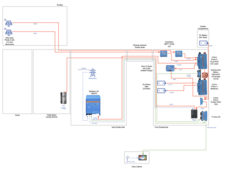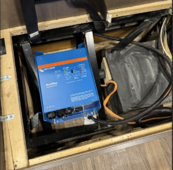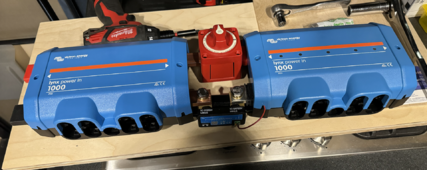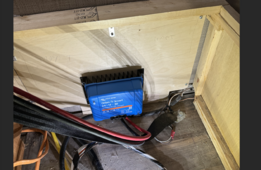BlindBadger
New Member
First time planning for a big power upgrade and we're pretty power hungry campers (smart phones, laptops, ipad, etc) even when boondocking (rare right now but planning on more next year and beyond).
I figured I'd see what the rest of you folks saw in case I'm missing anything in the diagram below and got the wire sizes right or close? (batterys will have terminal fuses on them).
Note: Phase 2 and 3 are next year likely...the rest is the main goal this year)
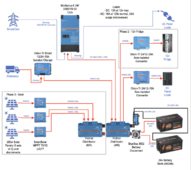
I got the lengths from measuring my planned locations for them...front dinette seat area is empty except for a bit of wiring from the external battery into the PDU mounted there and the existing chassis wiring for the alternator already comes right to the front dinette (behind the drivers seat) as the current 12v house battery is just below it in an outside tray).
I can either fit the MP1 under the back dinette (which has a bit of structure and the 30A recessed inlet/cable storage in there) or a MP2 in the back of the closet (which seems less than ideal for airflow/heat). Either location, I anticipate I'd need to cut and install a space for a fan and a vent at the top.
Option 1: Multiplus 1 in rear dinette (est 10ft of 2/0 from distributor to MP location when I measured...x3: pos, neg, gnd)

Option 2: Multiplus-II in closet (est 16-18ft of 2/0 from distributor to MP location when I measured...x3: pos, neg, gnd)

Also, anyone know why it seems like the MP1 is more expensive than the equivalent MP2 (the non 2x120 model) these days?
Solar stuff is all estimates right now based on what I measured I could fit, but I figured I'd plan ahead (also because I'm waiting to save up and hit the black friday sales at the end of the year for most of the purchases...so all I can do right now is dream and plan).
I figured I'd see what the rest of you folks saw in case I'm missing anything in the diagram below and got the wire sizes right or close? (batterys will have terminal fuses on them).
Note: Phase 2 and 3 are next year likely...the rest is the main goal this year)

I got the lengths from measuring my planned locations for them...front dinette seat area is empty except for a bit of wiring from the external battery into the PDU mounted there and the existing chassis wiring for the alternator already comes right to the front dinette (behind the drivers seat) as the current 12v house battery is just below it in an outside tray).
I can either fit the MP1 under the back dinette (which has a bit of structure and the 30A recessed inlet/cable storage in there) or a MP2 in the back of the closet (which seems less than ideal for airflow/heat). Either location, I anticipate I'd need to cut and install a space for a fan and a vent at the top.
Option 1: Multiplus 1 in rear dinette (est 10ft of 2/0 from distributor to MP location when I measured...x3: pos, neg, gnd)

Option 2: Multiplus-II in closet (est 16-18ft of 2/0 from distributor to MP location when I measured...x3: pos, neg, gnd)

Also, anyone know why it seems like the MP1 is more expensive than the equivalent MP2 (the non 2x120 model) these days?
Solar stuff is all estimates right now based on what I measured I could fit, but I figured I'd plan ahead (also because I'm waiting to save up and hit the black friday sales at the end of the year for most of the purchases...so all I can do right now is dream and plan).




